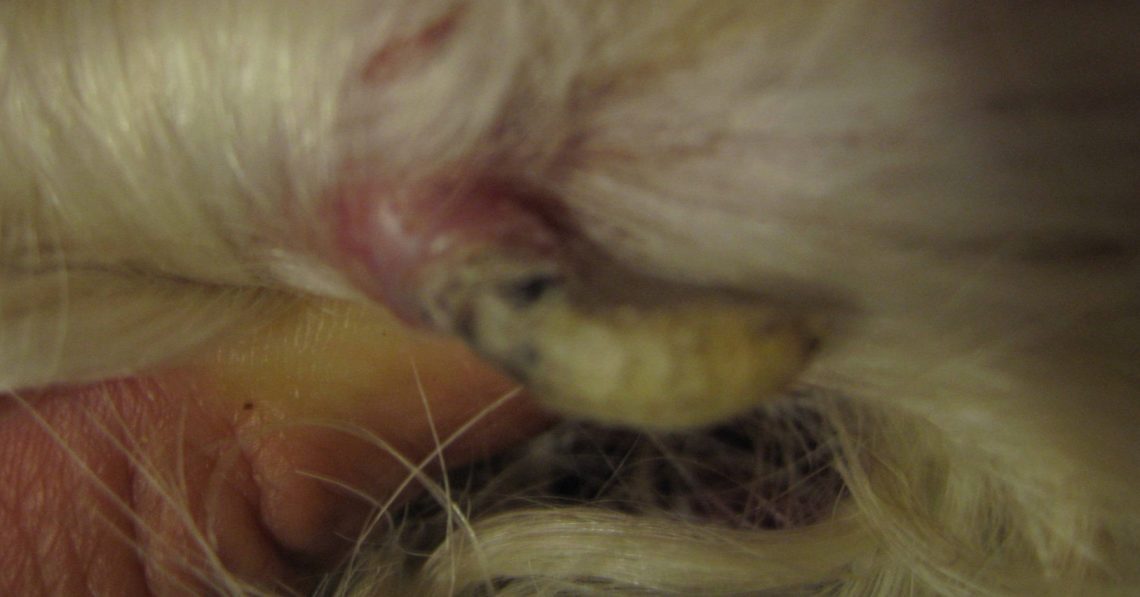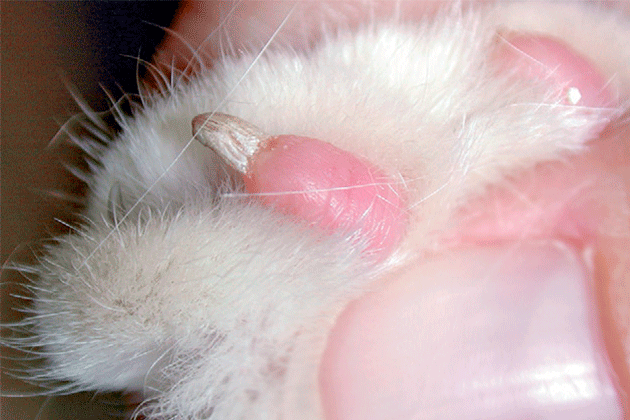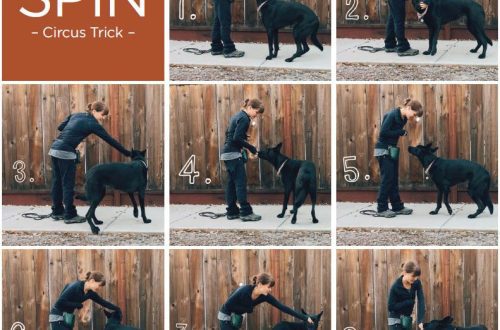
Cutaneous horn in dogs and cats

Strange dense growths in cats and dogs, horns and claws, located not at all where they should be, this is a skin horn. In this article, we will learn how it is formed and how to get rid of it.
What is a cutaneous horn?
These are dense formations of keratin, more common on the surface of the skin, nose, paw pads, but can be on any part of the body. They have a solid structure, may resemble a claw or a horn. Characterized by a cone-shaped protruding shape. Both the length and width of the skin horn can vary from a few millimeters to several centimeters. There is no pain, the skin horn usually does not interfere with pets. An exception is the localization of places of pressure or friction and in the area of paw pads. The animal steps on the skin horn and this causes discomfort. Lameness, lack of support on the paw, attempts to gnaw masses of keratin may occur.
Causes
The appearance of a skin horn is difficult to predict. There is no clear breed, sex or age predisposition. The main reasons for the formation of this structure include:
- Idiopathic cutaneous horn. That is, it is impossible to find out why it appeared and what is the reason for the violation of skin keratinization.
- Viral leukemia of cats. In this chronic, incurable disease of cats, growths can form on the fingers and paw pads. The owners do not even know what the reason is, although it happens that this is the only symptom of this terrible disease. Therefore, if you find a skin horn in your cat, you should donate blood and rule out leukemia.
- Solar dermatosis and keratosis. With regular exposure to the sun without hairless areas of the skin, burns can develop, and then precancerous conditions and skin horn.
- Oncological diseases of the skin. Sarcoma or squamous cell carcinoma changes the structure of the skin, causing inflammation, ulcers and other dermatological changes.
- Viral papillomatosis in dogs. Many dogs are asymptomatic carriers of the disease. With a decrease in immunity, both soft and dense keratin seals can form on the body and mucous membranes.
- Hyperkeratosis. Violation of the exfoliation of the epidermis can lead to the formation of dense growths and skin horn.
In most cases, the growths are harmless, benign. However, about 5% of neoplasms are malignant in nature.
Diagnostics
The diagnosis of “cutaneous horn” is often not difficult to make because of the characteristic appearance. But veterinarians recommend conducting a differential diagnosis and excluding more dangerous diseases. Cats, as mentioned earlier, need to be tested for viral diseases. The next step is to remove the formation, followed by a histological examination. If there are other types of skin lesions near the skin horn: pustules, papules, ulcers, erosion, then an analysis of the cellular composition can be performed. Cytology is performed much faster. However, for the diagnosis – skin horn, it is precisely the histological assessment of tissues that is needed.
Treatment
The main method that helps to get rid of the skin horn is surgical removal. However, it does not guarantee that education will not appear again and will not arise in the same or in a new place. For secondary infection, shampoos, ointments, or systemic antibiotics may be recommended. If you find a build-up on your pet, do not panic, contact your veterinarian.





